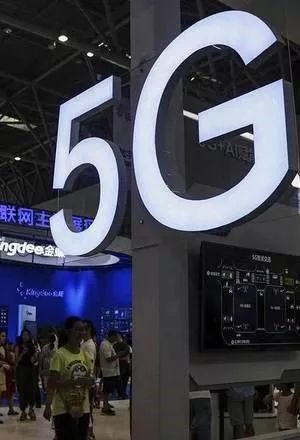The Hindu | Trade war spurs India-China digital embrace

By Atul Aneja
SEPTEMBER 21, 2019 20:53 IST
Technology leaders met in Shanghai to discuss ways to expand their footprint globally
In tune with the 5G technology revolution, two emerging economies — China and India — are looking seriously at docking their hardware and software heft to expand their footprint across the globe, including the Global South. Out of the five arenas earmarked for joint forays at the recently concluded India-China Strategic Economic Dialogue in New Delhi, the one on high-technology turned most heads.
Far away from the Indian capital, and on the ground in Shanghai, China’s bustling commercial capital, hard-nosed tech disruptors from India and China, confidently elbowing their place into the cyber-universe, were already off the blocks.
Amid the late evening glitter of downtown Shanghai — amplified by the shimmer of Huangpu river that languidly flows through the city — the Indian consulate, last month, pooled some of the big names in the IT space. C.P. Gurnani, CEO of Tech Mahindra of India, rubbed shoulders with Peter Xu of SenseTime, an Artificial Intelligence (AI) heavyweight with a valuation of $4.5 billion from China, which appeared unbending in its resolve to dominate the “smart” urban landscape. Edward Tse of the Gao Feng Advisory company also made his presence felt by making a brave attempt to unravel the DNA of Chinese digital top guns, apparently in a bid to convince Indian techies that China, more than any other country, was the future.
A new wave of Chinese upstarts is challenging, and sometimes outstripping, the U.S. in the race for 5G dominance, AI, and its downstream derivatives such as Smart Cities, Driverless cars, advanced healthcare and Financial Technology (Fintech) products.
“Chinese companies are also well known for innovations in areas such as drones, Fintech, and artificial intelligence. DJI, a Shenzhen-based company, has a global market share of around 70% in consumer drones. Ant Financial, a Chinese Fintech company and an affiliate of e-commerce giant Alibaba, is now the world’s largest unicorn with a valuation of $150 billion,” Mr. Tse observed.
Quest for 5G dominance
The awareness of the transformational impact of the 5G wireless technology was a key undercurrent that animated the evening in Shanghai. 5G networks can, without delay, channel copious amount of data, parked as Big Data on Internet clouds. That, in turn, can activate millions of AI applications to work simultaneously.
A recent paper by the Defence Innovation Board, an independent federal committee that advises the U.S. Department of Defense, concluded that “the leader of 5G stands to gain hundreds of billions of dollars in revenue over the next decade, with widespread job creation across the wireless technology sector”.
In one of his interventions, Mr. Gurnani explained how collaboration between Tech Mahindra and SenseTime in AI platforms can be a game-changer in providing rural health care in India.
“SenseTime is ultimately developing a rule engine and a platform on which you can develop applications. Now think about it. In India, with a population of 1.3 billion people, the doctor strength in rural areas is close to zero, because doctors do not want to go to rural areas. With a 5G communication with SenseTime, I could easily be developing an application where doctors can remotely work with hundreds of villages and hundreds of patients,” he said.
“If I am able to do this in India, why can’t I do it for a billion people in Africa?”
Inviting Chinese companies to invest, Mr. Gurnani stressed that India’s political stability and business-friendly environment was there to stay. “The stability of India, the progressive nature of India and also the consistency of policy can now be taken a lot more (seriously) than the guy who tweets at 3 a.m. in the morning,” he said, in an apparent reference to U.S. President Donald Trump.
Amid a trade war with the U.S., some of the presenters at the event made it plain that key Chinese companies would not be second-best in the high-technology race.
“The U.S.-China trade dispute notwithstanding, China will emerge as a larger and more capable, innovative economy... The lack of core technologies such as cutting-edge microchips has exposed China’s weakness but this has also given impetus for the Chinese to catch up,” said Mr. Tse of Gao Feng Advisory.
“Many start-ups will fail, but a small percentage will make it. It would be foolhardy for anyone to discount China’s will and ability to achieve its goals.”
